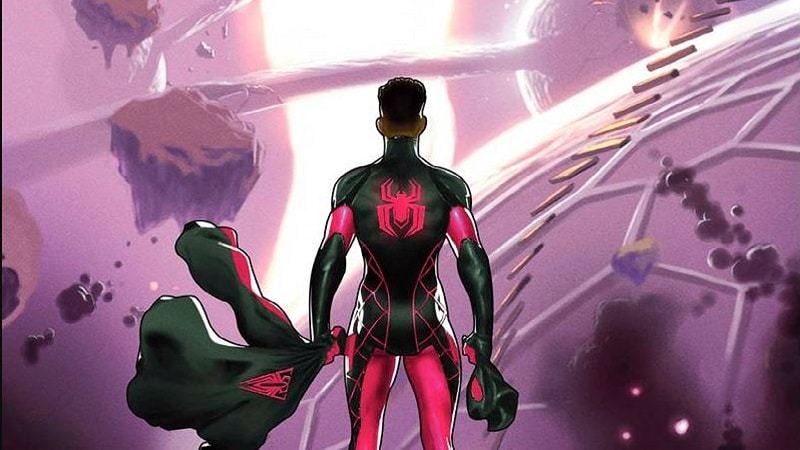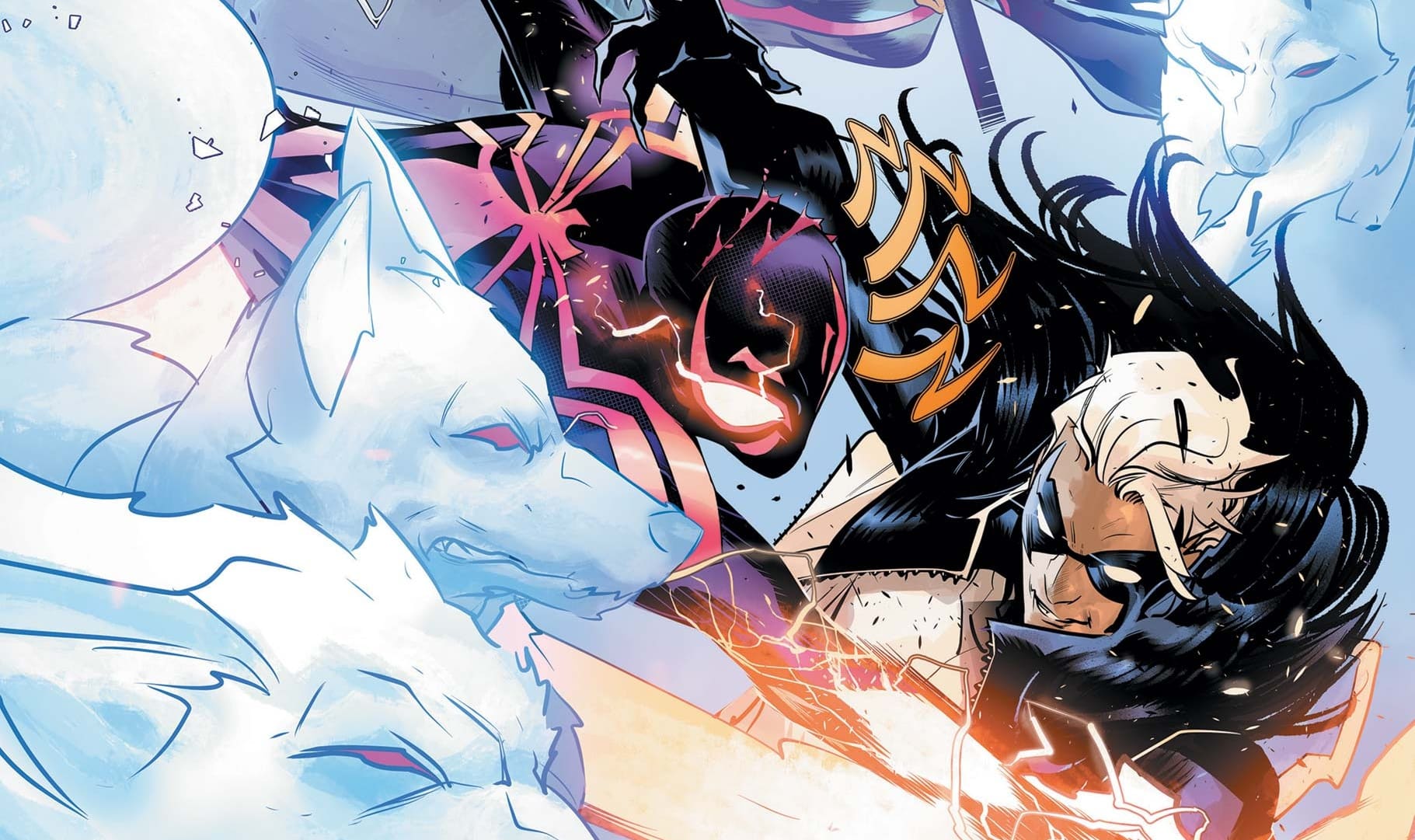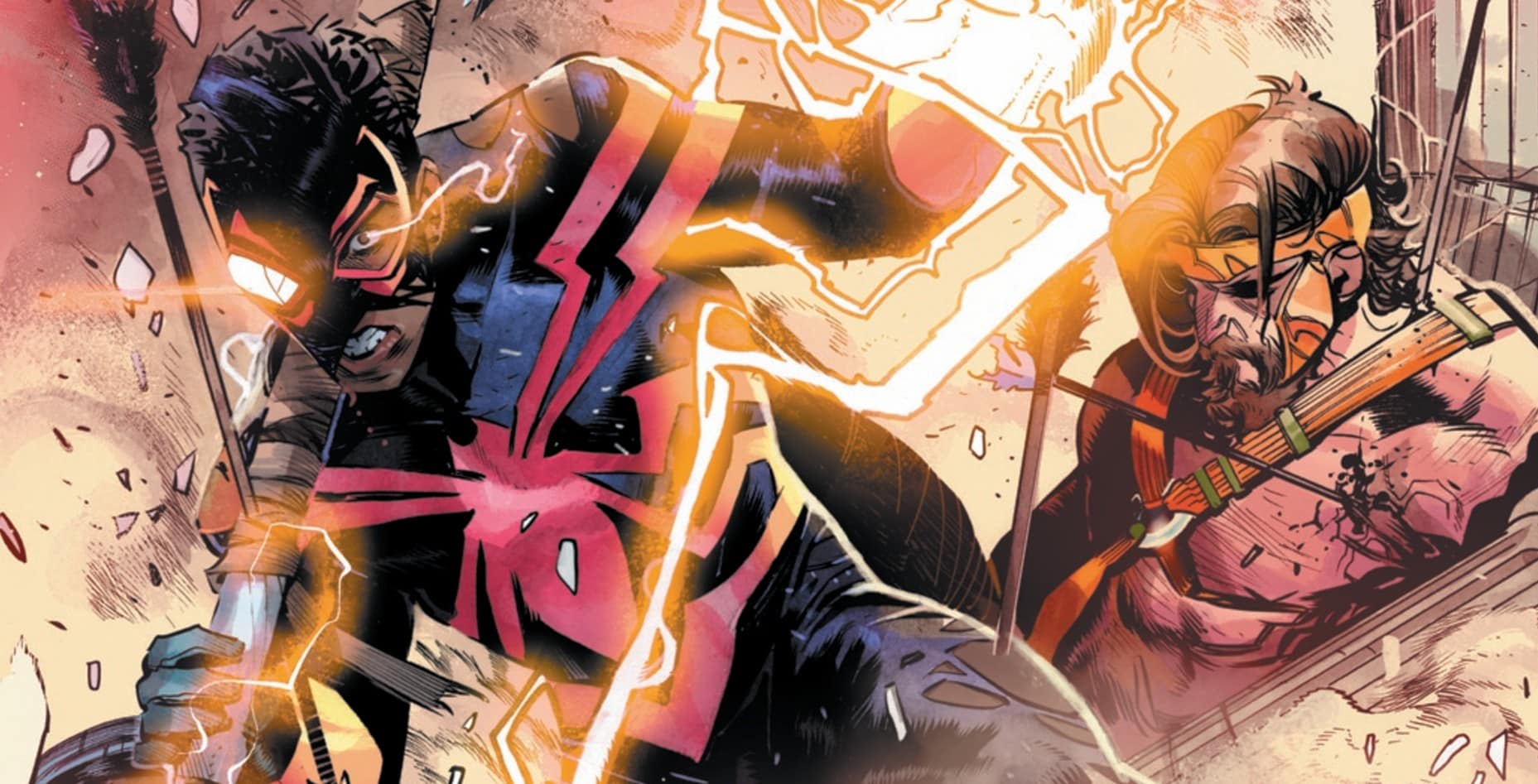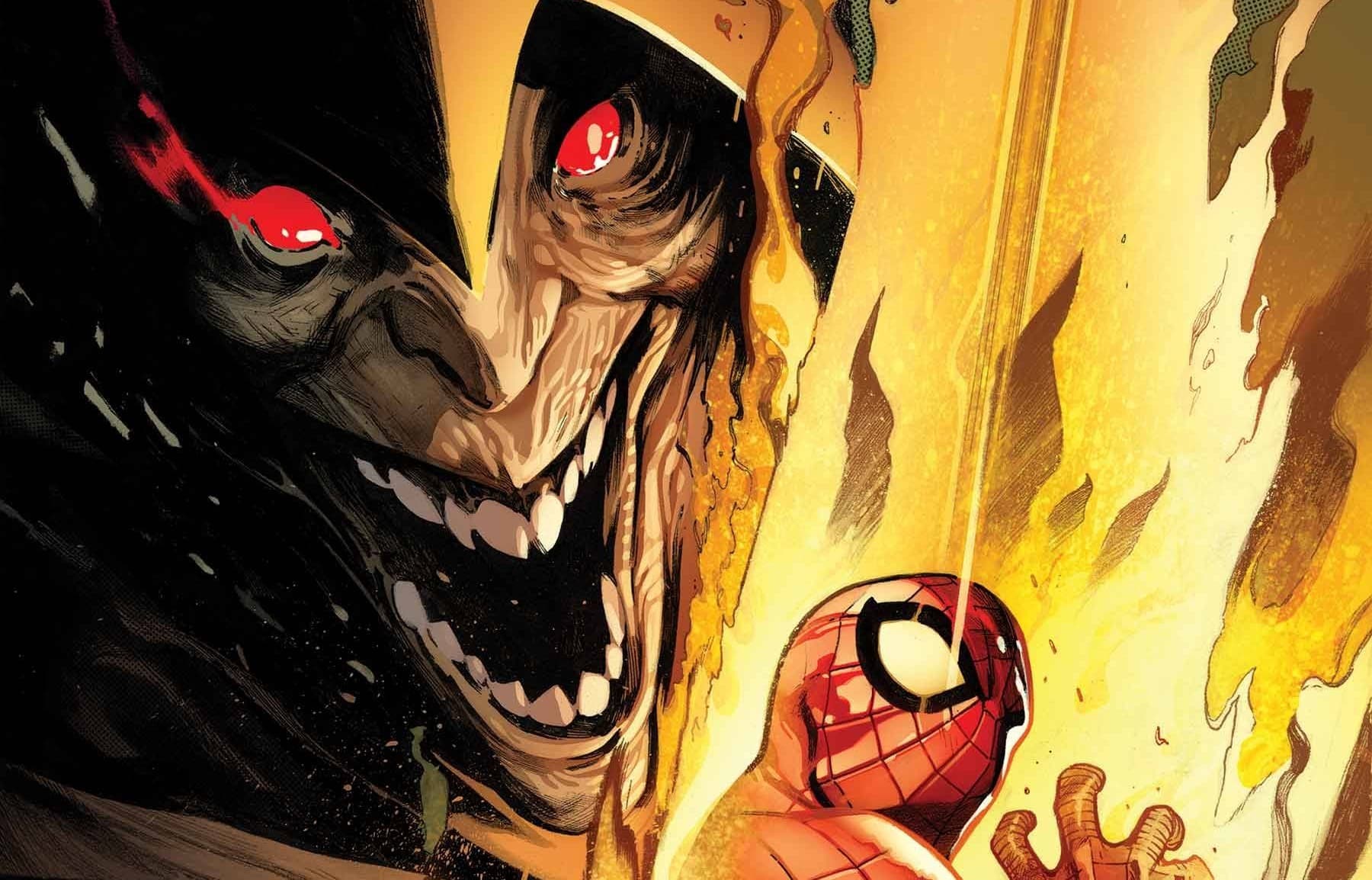It’s a large world, yes, but it’s also very small. I find that niche communities— say, I don’t know, comic review sites, dispersed around the world as they may be— cultivate a connected community.
So as a member of this connected comics community, I’ve been more than tangentially aware of a few illustrators and writers assailing (internet) comic criticism. And while some critiques are unfair, (Most of us lose money stewing over our passion projects before and after our paid jobs), there is validity there. Most of us, for instance, don’t pay nearly enough attention to illustration, coloring, and/or lettering. Most of us, myself included, primarily, if not only judge works by their plot and narratives. That’s not fair in a medium that’s literally about pretty pictures,
So with Miles Morales #37, I thought I’d look at this work art first. And, after stewing about a bit, I’d argue the art is central here.
But not for the reasons you might think.
Representation matters, right? Seeing your face, my face, in full color, is powerful, right?
I’d argue it is, which is why examining how much time Miles spends behind his mask is so interesting.
Maybe that’s a good thing! Now anyone can see themselves as our hero!
But given there are kids, Black kids, who would benefit disproportionately from seeing someone with their (our) skin perform heroism; given Black Panther and the Black Batman completely cover their faces…maybe that mask isn’t such a good thing after all.
Now I’m tempted to look back at issue after issue to see exactly how much time he spends masked; I’m even curious if he spends more time masked than Peter Parker.
Yes, I’m aware of the bevy of Black heroes that are mask-less, and no, I’m not pedaling a half thought-out conspiracy theory.
I am saying image matters all of the time.
And in this issue, the only images of mask-less, brown-skinned Miles in this story of a Black, male hero show deceit, anger, and pain.
Deceit comes from the Earth-616 version of Miles Morales known as “Ultimatum”, who, even after defeating and exiling the interdimensional purgatory in which the bulk of this issue takes place, still seeks revenge over salvation.
This “other” Miles’s brown skin is devoid of warmth, literally. His skin tone is colored a tinge cooler than the other characters. This is either intentional (because he’s a cold character), or a misreading of how to color lighter brown skin (depictions of “our” Miles don’t seem to have this problem, so I’ll assume the former.) This isn’t my only coloring issue. The colors throughout the issue feel limited— like the artist only had 13 shades to work with and had to make do. This, of course, isn’t necessarily a bad thing; limited colors are often beneficial, drawing the eye to where the colors (or lack of coloring) coalesce. Here, however, the coloring doesn’t draw my eye towards a character or point of action. More color, or less color, or brighter colors might have been more effective throughout.
We see images of pain from yet another alternate Miles. This time, it is a version of our Miles who is murdered from behind by an alternate version of Selim, his cloned brother.
The violence feels a little much for such a normally PG production. Seeing a Black teen stabbed in the back by his own (cloned) brother is, well, a lot and could have been a moment for a profound meditation.
There was none here. And that’s fine!
But!
I often wonder how a team of Black writers would have illustrated this work. What would they have highlighted? What would they have avoided? Again, I’m not saying what we have here is bad. I’m simply saying that others may have treated this moment with a different kind of reverence, a reverence that irrevocably would have changed how it was illustrated.
Representation matters, remember.
Another note on violence here: The earlier fight with Ultimatum was interesting, but felt a little jumbled due to colors and placements of panels. It wasn’t always super clear what flowed into where, so I had to re-read a few times to catch the flow of things. This isn’t necessarily bad, and it may be user error, but it is worth noting that my flow, and thus my enjoyment, was interrupted a few times.
Finally, anger. Sneering, vengeful anger from Selim (remember, it’s Miles spelled backwards) who, after killing alternate Miles, subsequently takes over this alternate world.
The idea that Miles, if properly motivated, could take over the universe is UNIRONICALLY one I share. He’s the best Spider-Man with the best movie and a face and legacy that aren’t mired in dirty history. He actually could, maybe should, run this universe. But here we are, in this universe with this comic.
The thing about this New World (and that purgatory world, and our world) is they don’t look that dramatically different from each other. Rocks look the same. People look and walk the same. And that’s fine for continuity— it makes things easier to follow, right? But if I’m drawing a whole new dimension, maybe I want to take some risks with how that dimension looks.
And really, that’s my issue here. Everything is riskless. The narrative. The coloring. The movements and fights.
I know there’s nothing new under our sun.
I just hoped that under a different dimension’s sun, that wouldn’t be the case.
Oh well.
It’s a small world (and universe…and dimension), after all.
A proud New Orleanian living in the District of Columbia, Jude Jones is a professional thinker, amateur photographer, burgeoning runner and lover of Black culture, love and life. Magneto and Cyclops (and Killmonger) were right. Learn more about Jude at SaintJudeJones.com.






